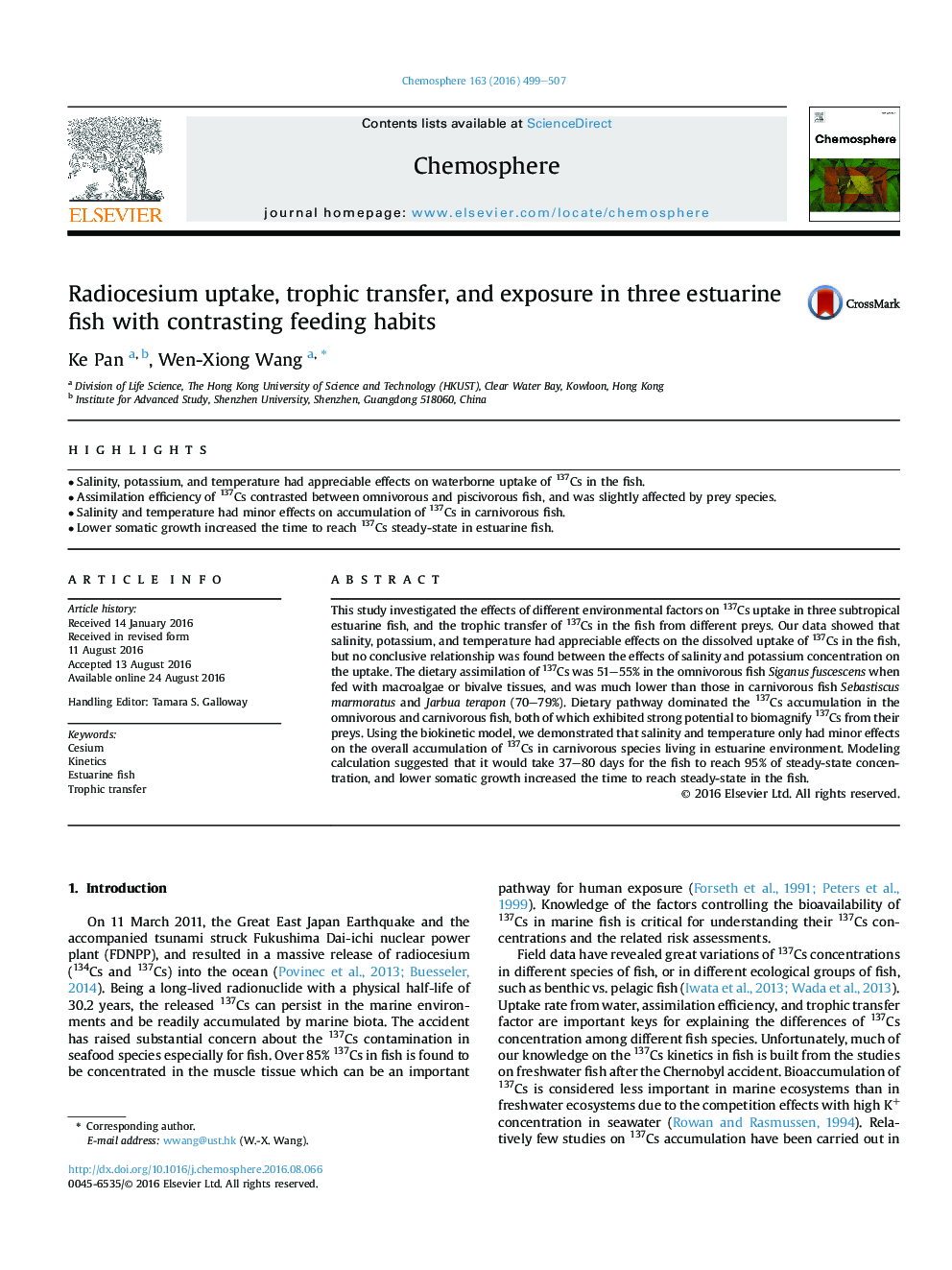| Article ID | Journal | Published Year | Pages | File Type |
|---|---|---|---|---|
| 6306309 | Chemosphere | 2016 | 9 Pages |
â¢Salinity, potassium, and temperature had appreciable effects on waterborne uptake of 137Cs in the fish.â¢Assimilation efficiency of 137Cs contrasted between omnivorous and piscivorous fish, and was slightly affected by prey species.â¢Salinity and temperature had minor effects on accumulation of 137Cs in carnivorous fish.â¢Lower somatic growth increased the time to reach 137Cs steady-state in estuarine fish.
This study investigated the effects of different environmental factors on 137Cs uptake in three subtropical estuarine fish, and the trophic transfer of 137Cs in the fish from different preys. Our data showed that salinity, potassium, and temperature had appreciable effects on the dissolved uptake of 137Cs in the fish, but no conclusive relationship was found between the effects of salinity and potassium concentration on the uptake. The dietary assimilation of 137Cs was 51-55% in the omnivorous fish Siganus fuscescens when fed with macroalgae or bivalve tissues, and was much lower than those in carnivorous fish Sebastiscus marmoratus and Jarbua terapon (70-79%). Dietary pathway dominated the 137Cs accumulation in the omnivorous and carnivorous fish, both of which exhibited strong potential to biomagnify 137Cs from their preys. Using the biokinetic model, we demonstrated that salinity and temperature only had minor effects on the overall accumulation of 137Cs in carnivorous species living in estuarine environment. Modeling calculation suggested that it would take 37-80 days for the fish to reach 95% of steady-state concentration, and lower somatic growth increased the time to reach steady-state in the fish.
